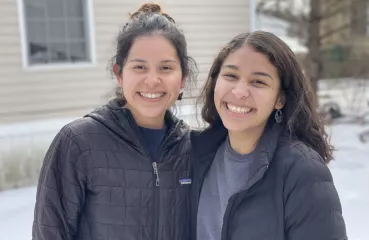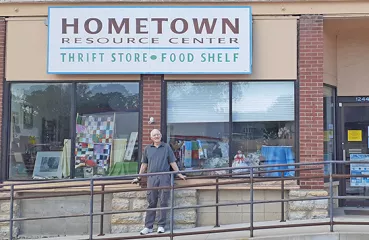|
Pairing energy efficiency incentives with affordable housing programs is something the city has been doing for many years. They offer three programs to multifamily property owners:
- 4d Affordable Housing Incentive Program: reduces a building’s property taxes by 40% if 20% of units remain affordable for five years, with the additional benefit to receive free or low-cost energy audits.
- Multifamily Rental Rehabilitation Loan: generous loan and loan forgiveness for building improvements if 18% of units remain affordable – encouraged for energy efficiency improvements.
- Solar Sundown: a cost-share program to incentivize solar adoption on all existing buildings.
|
Why use energy efficiency to combat the affordability crisis?
Simply, says Pottorff, because “keeping energy costs low means more affordable bills for tenants, while weatherizing those units also means increased comfort for residents.” (Of course, this is in addition to the environmental benefits.) Ensuring that energy bills are affordable helps keep Naturally Occurring Affordable Housing (NOAH) affordable.
Most housing in the Twin Cities metro area is unsubsidized, but NOAH is a specific subset of unsubsidized housing which is still affordable to families making 60% or less of the 13-county metro region’s area median income (AMI). In 2022, Minnesota Housing Finance Agency set this figure at a household income of $70,920 per year.
Maintaining NOAH housing stock is a big deal. Three-quarters of the affordable rentals in the metro area are NOAH rentals — 167,000 units — and are typically occupied by residents with lower incomes.
Since these units aren’t subsidized or regulated by the government, rent and the price of living can be sensitive to swings in the economy, building improvements, or new developments in the area, all which risk pricing out families who can no longer afford to live there.
“As we heard in the surveys,” says Pottorff, “81% of respondents were concerned that their rents may rise in the future.” And for good reason — in St. Louis Park, 71% of the market rate rental housing stock in 2013 was affordable to those making 50-60% AMI. By 2018, only 49% was affordable.
The pandemic and inflation put both renters and their property owners in a bind. In St. Louis Park, 38.2% of renter households pay more than 30% of their income on rent and are considered cost-burdened. Properties are becoming more expensive to manage — even though maintenance was often deferred on NOAH properties pre-pandemic, the national share of landlords deferring maintenance was six times higher in 2020 than in 2019, according to the Joint Center for Housing Studies of Harvard University's 2021 Improving America's Housing report [PDF]. If a property owner decided to make an improvement to their property, without government support that cost could likely be passed down to their tenants.
This creates a situation where a vulnerable subset of the city’s population is at risk of both higher rents and increasingly dilapidated housing.




